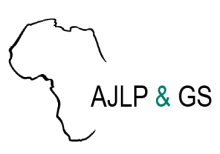Land Library Search
Through our robust search engine, you can search for any item of the over 73,000 highly curated resources in the Land Library.
If you would like to find an overview of what is possible, feel free to peruse the Search Guide.
/ library resources
Showing items 1 through 9 of 137.Este documento presenta una síntesis regional de los estudios de caso en América Latina y el Caribe de la Iniciativa sobre Desigualdad de la Tierra.
This study examines the dynamics of fringe land invasion in Birbir Town southern Ethiopia by adopting a descriptive survey design with both qualitative and quantitative data analyses Primary data were acquired through a household survey key informant interviews focus group discussions and observa
The pervasiveness of territorial marks in postconflict neighbourhoods elicited this study Relying on residents perceptions the study explored the dynamics underpinning residents use of territorial marks Primary data was collected by administering questionnaires to residents of various neighbourho
This article explores the connection between Smart Growth and the decolonization of urban growth management in Egypt examining the impact of former colonial influence on present urban policy and practices Drawing insights from the urbanization of Egyptian desert areas before and after the New Urb
Context and background Residing in areas of flood risk informal settlements is more or less normal among low-income households in most cities of the developing countries.
The purpose of this study was to explore perceptions of the benefits and challenges experienced by community and allotment gardens utilising a broad theoretical analysis, pertaining to the case study of Melbourne, a city in Australia that until recently has been experiencing significant populatio
While the driving factors of urban growth and urban sprawl have repeatedly been studied, the implications for residential densities presumably differ in growing and shrinking regions. Thus far, those differences have received little attention.
The purpose of this study was to evaluate the four-dimensional relationship between land use, accessibility, density, and surface runoff in urban areas.






